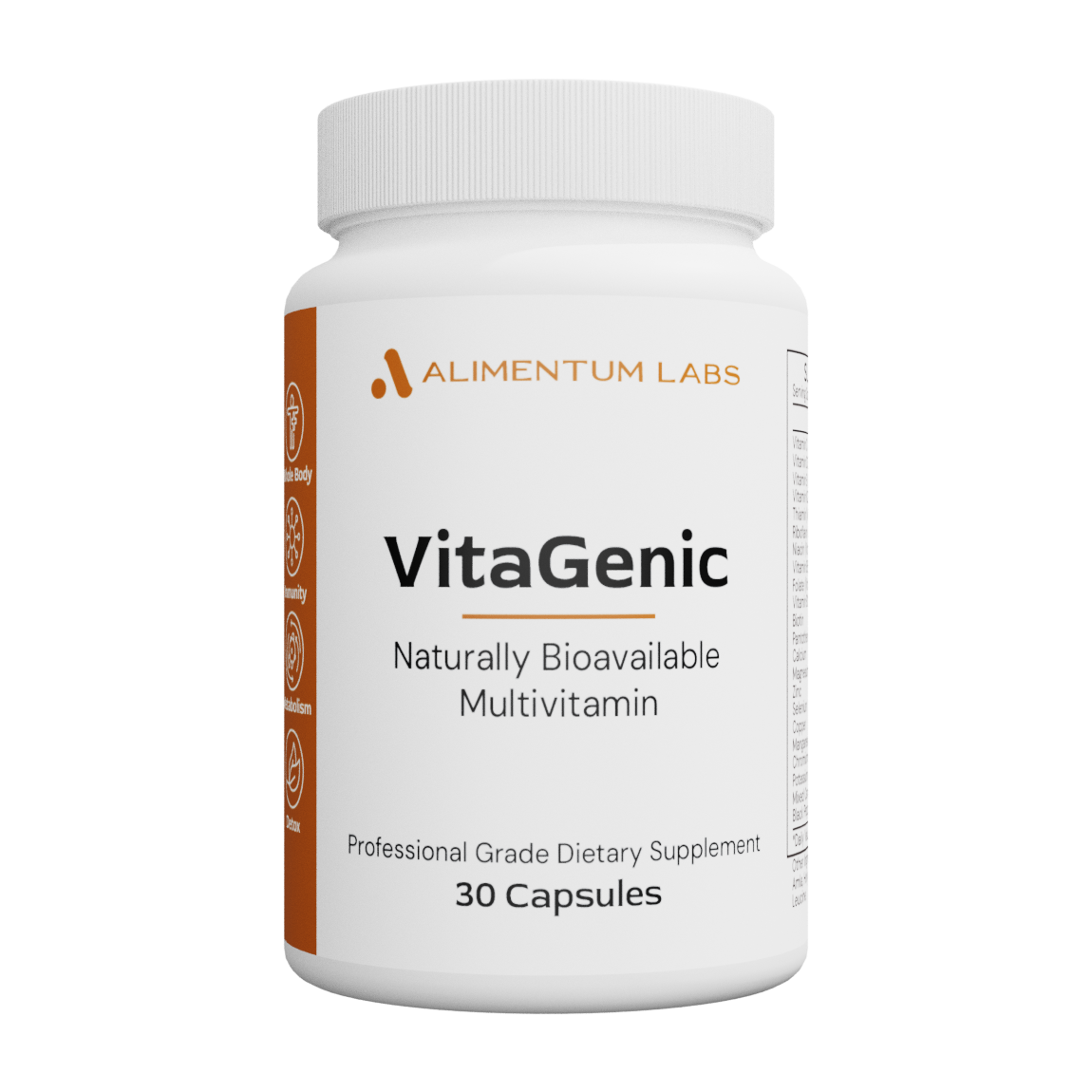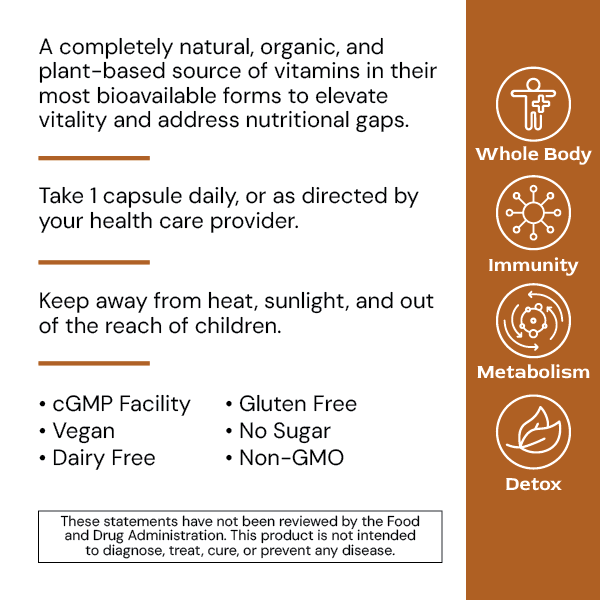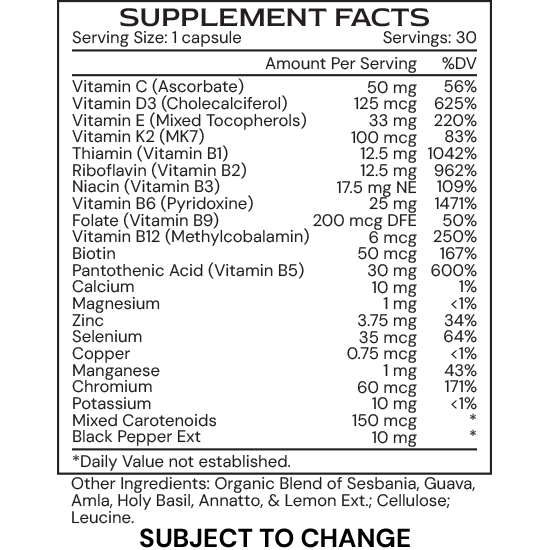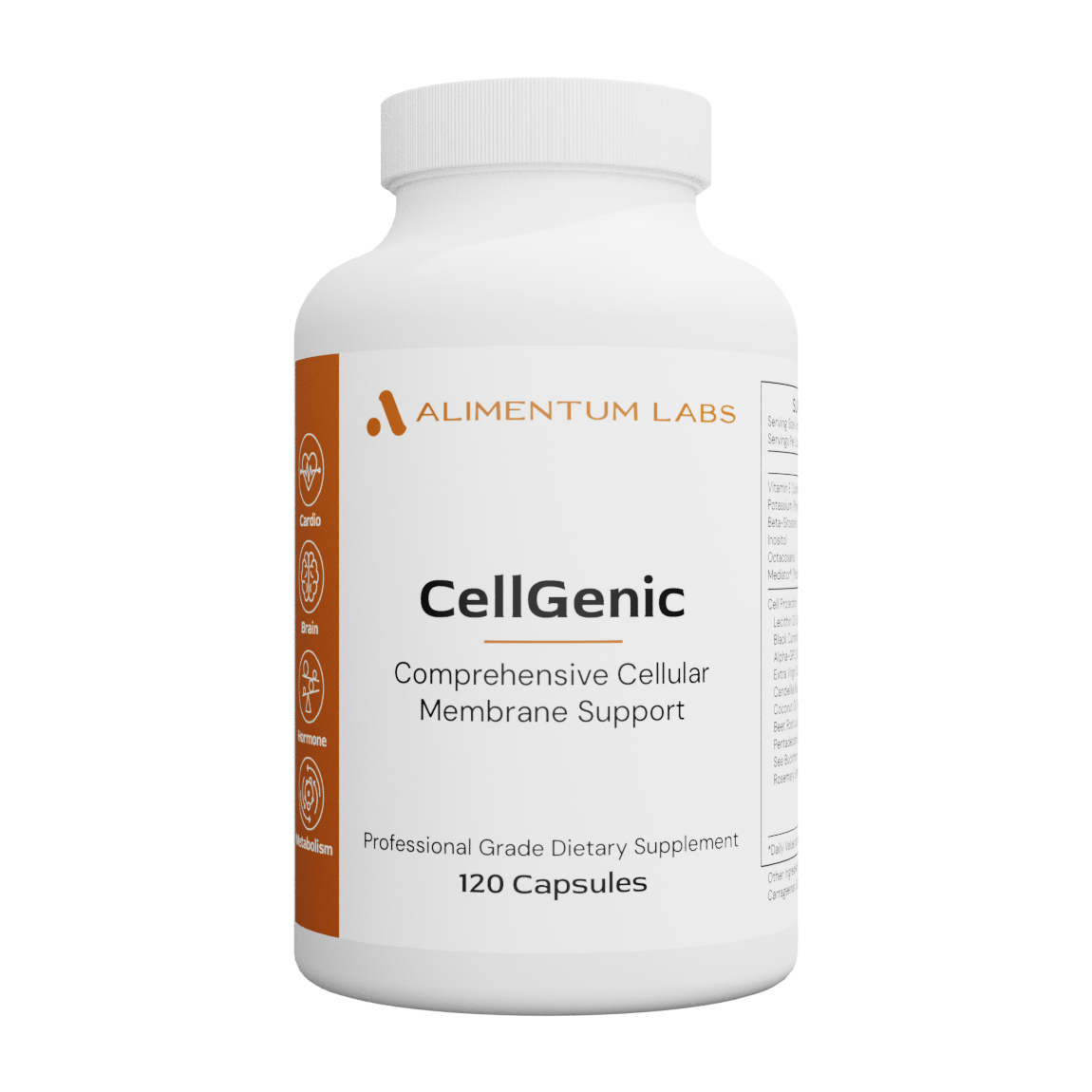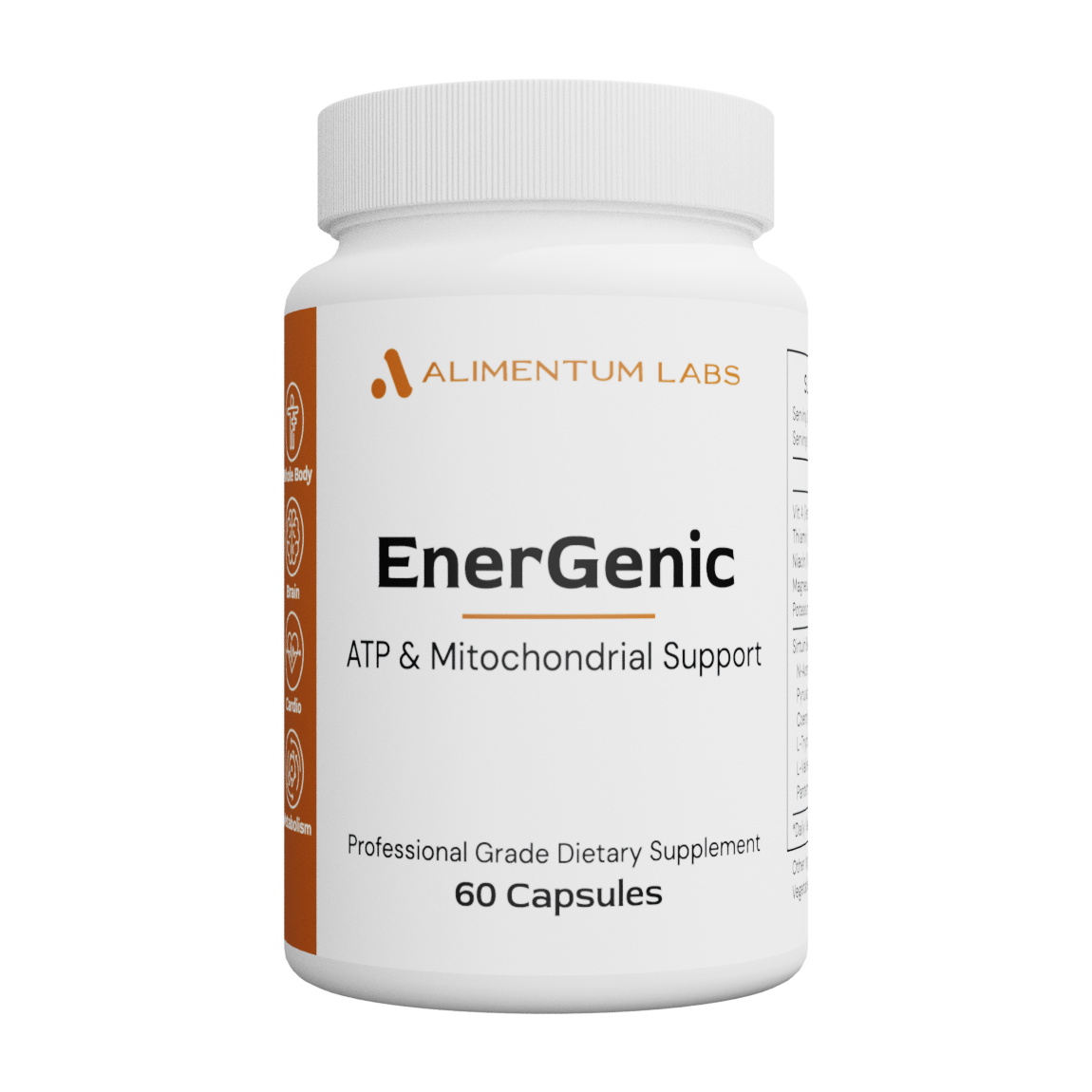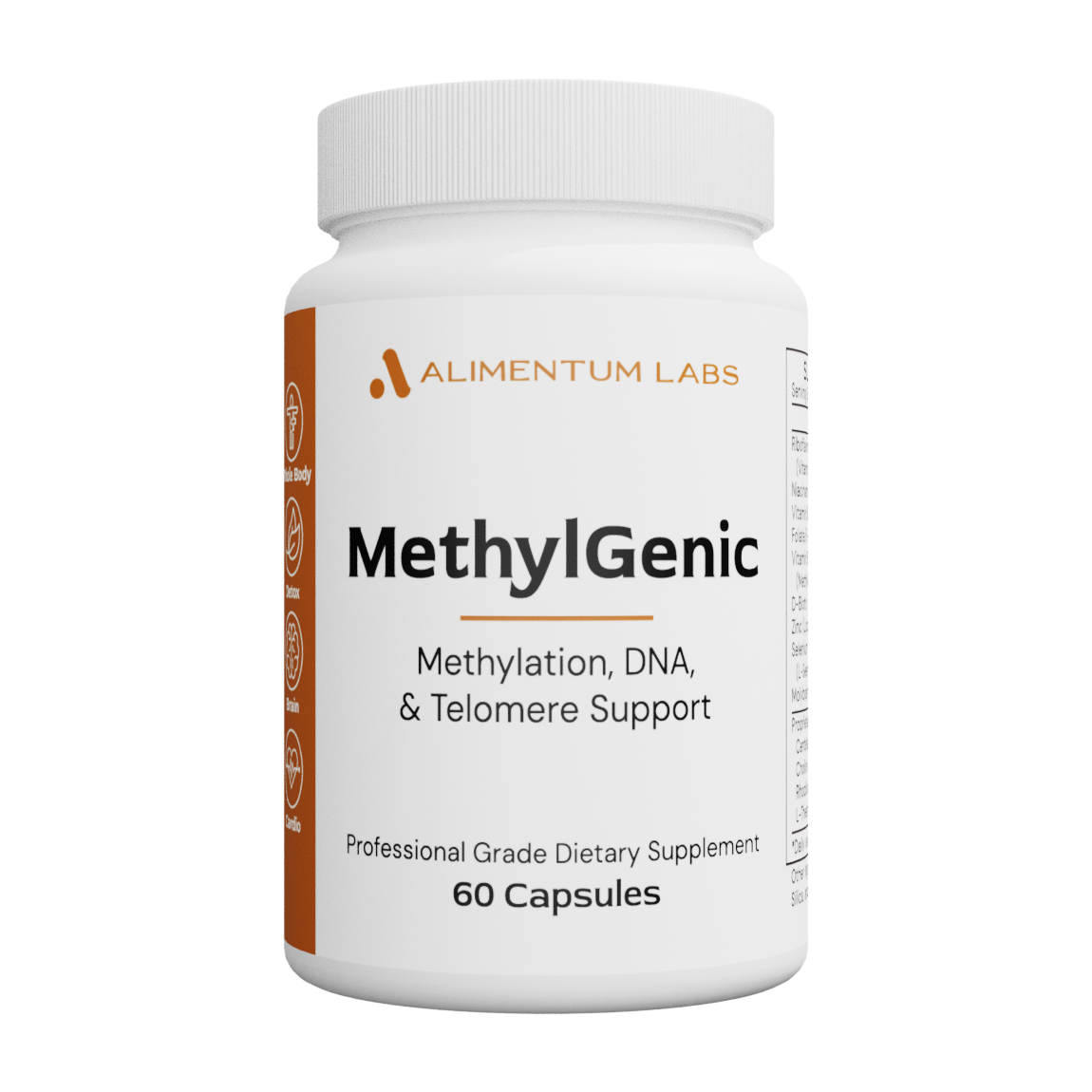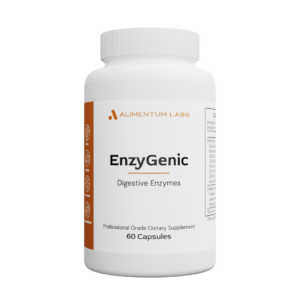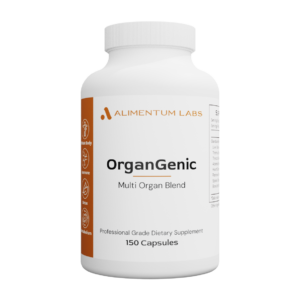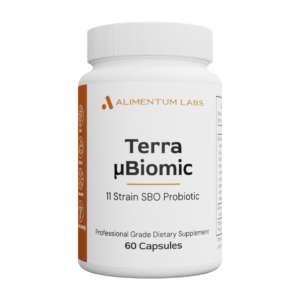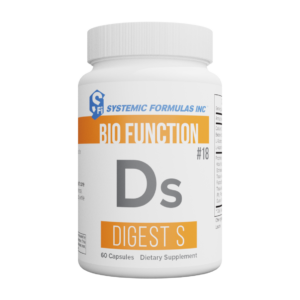Description
In Depth
VitaGenic by Alimentum Labs is a 100% certified organic, plant-based multivitamin that delivers the most bioavailable nutrients to support optimal cellular health and vitality. This full-spectrum formula is designed to enhance cellular function by providing essential vitamins and minerals in their natural, whole-food forms. With a focus on maximum absorption, VitaGenic supports key cellular processes such as metabolism, detoxification, and recovery from stress.
Through the latest advancements in herbalomic research, this supplement combines potent botanicals with nutrients that activate cellular repair mechanisms, optimize digestion, and support long-term wellness. It’s the ultimate, science-backed solution for daily nutritional needs and cellular regeneration.
Key Features
- Vitamin E acts as a powerful antioxidant, protecting cells from oxidative damage that can lead to aging, inflammation, and chronic diseases. By neutralizing free radicals, it helps maintain healthy cell membranes and supports immune function, while also playing a role in regulating genes and cellular signaling. Its benefits extend to cardiovascular health, as well as helping to modulate inflammation and support lipid metabolism, all of which contribute to long-term vitality and overall well-being.
- Vitamin D3 supports a wide range of vital functions within the body, including strengthening the immune system and promoting healthy bone structure. By regulating key metabolic processes and influencing hormone balance, it helps maintain overall health and well-being. Additionally, its role in supporting cardiovascular health and brain function contributes to a more energetic and resilient body.
- When taken along side vitamin D3, vitamin K2 plays a vital role in directing calcium to the bones, where it’s needed, while preventing its accumulation in arteries, which can lead to cardiovascular issues. By activating key proteins involved in bone mineralization and vascular health, vitamin K2 helps maintain bone density and reduces the risk of fractures, while also promoting healthy blood vessels and supporting heart function. Its influence on calcium regulation ensures both skeletal strength and cardiovascular protection, contributing to long-term health.
- The methylated form of vitamin B12, methylcobalamin, is crucial for maintaining healthy nerve function and energy levels, as it supports essential processes like DNA synthesis and the production of red blood cells. By helping regulate neurotransmitters and lowering homocysteine levels, it plays a key role in protecting against neurodegenerative diseases and ensuring proper cognitive function. Additionally, B12 helps prevent anemia and supports cardiovascular health by promoting efficient oxygen transport throughout the body.
- The bioactive form of vitamin B9, folate, is essential for DNA synthesis and cell division, playing a key role in the formation of red blood cells and the maintenance of cellular health. By regulating homocysteine levels, it supports cardiovascular health and proper neurological function. It is also crucial for healthy prenatal development, as it aids in tissue growth and the proper formation of the fetal brain and spine, ensuring long-term well-being and overall vitality.
White Paper
The White Paper is your comprehensive guide to understanding this product. It details the ingredients, their functions, and how they work together to deliver results. Complete with usage guidance and safety information, it’s an invaluable resource for anyone seeking a thorough understanding of this formula.
Essential Ingredients
- Vitamin E (Mixed Tocopherols)
- Vitamin D3 (Cholecalciferol)
- Vitamin K2 (MK7)
- Vitamin B12 (Methylcobalamin)
- Vitamin B9 (Folate)
Directions
Take 1 capsule daily, or as directed by your health care provider.
Warnings
Keep away from heat, sunlight, and out of the reach of children.
Quality Guarantee
cGMP facility
Vegan
Non-GMO
Gluten Free
Dairy Free
No Sugar
Frequently Asked Questions
Who should take VitaGenic?
VitaGenic is perfect for anyone looking to support cellular health, energy, and overall wellness with natural, bioavailable nutrients. It’s especially beneficial for those seeking to fill nutritional gaps, improve digestion, and promote long-term vitality, immune function, and skin health.
How should I take VitaGenic?
Take 1 capsule of VitaGenic daily, or as directed by your healthcare provider, for optimal results.
Can I take VitaGenic with other supplements?
Yes, you can take VitaGenic with other supplements. However, it’s always a good idea to consult with your healthcare provider to ensure compatibility with any other products you may be using.
Can I take VitaGenic if I'm pregnant?
Yes, you can take VitaGenic during pregnancy, as it contains many essential nutrients found in prenatal vitamins that support a healthy pregnancy. However, it’s always best to consult with your healthcare provider before adding any new supplement to your routine while pregnant.
How does VitaGenic improve nutrient absorption?
VitaGenic improves nutrient absorption by providing vitamins and minerals in their most bioavailable, whole-food forms. This ensures that the nutrients are easily absorbed and utilized by the body, maximizing their effectiveness. Additionally, the plant-based ingredients in VitaGenic work synergistically to enhance digestion and support gut health, further optimizing nutrient uptake and overall absorption.
Why is vitamin K2 important for cardiovascular health?
Vitamin K2 is important for cardiovascular health because it helps regulate calcium within the body. It activates proteins like matrix Gla-protein (MGP), which directs calcium to be deposited in bones and teeth rather than in blood vessels. This prevents the buildup of calcium in the arteries, reducing the risk of arterial stiffness and plaque formation, which can lead to cardiovascular diseases. By ensuring proper calcium distribution, vitamin K2 helps maintain healthy blood vessels and supports overall heart health.


